A refillable CO2 system consists of many different components, which are connected with hoses. (By the way, for an overview of the setup of a CO2 system, please look here.) If the system does not work properly, the fault can be in many possible places, due to the modular build of the whole system. Special care needs to be taken in the event of a leak - escaping CO2 may not be exactly harmless, especially in closed rooms. In this article you can find help if you have problems with leakages in your CO2 system.
Detecting leaks directly on the system can be hard, since they can be very small and inconspicuous. Symptoms such as
- a suddenly depleted CO2 cylinder
- insufficient pressure or pressure loss (e.g. no or little formation of CO2 bubbles inside the aquarium)
are indicators for a tightness problem.
If the cylinder is empty much earlier than expected or if you detect all of a sudden that there's no more CO2 in it at all, the reason might lie in faulty, leaking gaskets or in faulty fittings on the pressure regulator. Gas always chooses the shortest and easiest way, with as little resistance as possible, and therefore CO2 tends to escape through leaks directly on the cylinder or the pressure regulator. If you replace parts in your CO2 system that has been running for some time, it is important to check the tightness of the new parts. Even the regular replacement of the cylinder is an intervention in a running system and thus a potential source of error. Have all fittings been tightened? Are the rubber gaskets, especially those of the cylinder, still intact, elastic and thus tight?
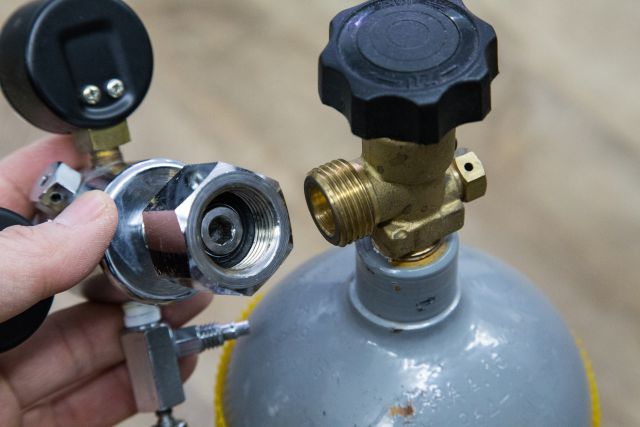
If the system does not work properly and if there are hardly any bubbles emerging from the diffuser, although the manometer and cylinder pressure gauges indicate a regular pressure, the error may lie in one of the component built into the hose line between the pressure regulator and the diffuser. In this case you need to check the fittings and, above all, the components that might offer resistance to the gas: the hose itself, the check valve, the bubble counter and, of course, the diffuser.
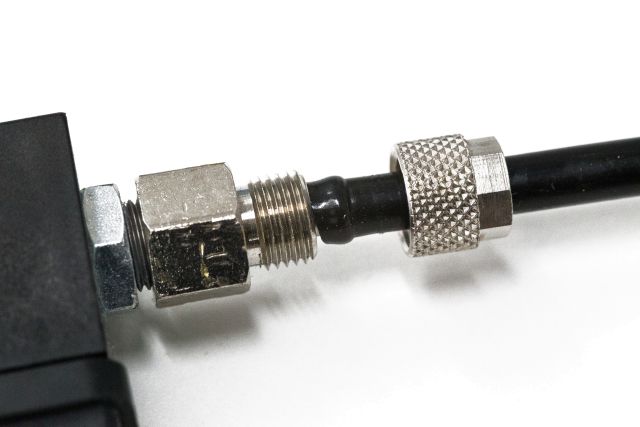
All fittings need to be checked.
Locating leaks
Especially the plug connections of the hoses to the various CO2 components such as diffusers, bubble counters, check valves and so on can be checked for leaks pretty easily: Just hold the connected parts under water. Escaping gas can then be easily spotted by the tell-tale bubbles that form. Of course, this method must only be applied to components that survive a short time under water! Caution: technical components such as the cylinder, the pressure regulator, the pressure gauge, the solenoid valve and even some check valves are not suitable for this!
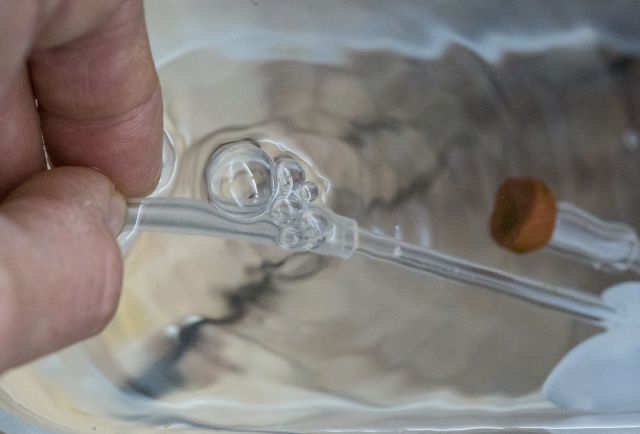
Bubbles forming under water indicate leaks. In this case, there’s a leak between the hose and the diffuser.
If you have a good ear, you may hear the typical hissing sounds that occur when the gas escapes when the system is turned on (e. g. when the solenoid valve is activated). Occasionally, the sounds and thus the location of the leak can be located by listening carefully.
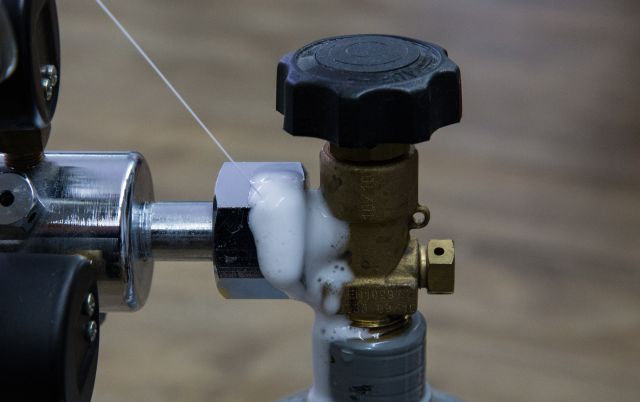
A very good tool for leak detection is the use of leak detector spray, available in any well-stocked hardware store. The spray consists of a very fine foam, which is applied to possible leaky spots. If a notable amount of bubbles forms, you have found the leak. Please use leak detector spray only outside the aquarium! It is particularly suitable for finding leaks on all screw connections (cylinder, pressure regulator, needle valve).
Fix leaks
Check all push-over connections if a sufficient length of hose has been pulled over the connection, and if it sits tightly. If the connection is equipped with locking screws, check if they need to be fastened.
Rubber gaskets in the fittings need to be intact and elastic and sit well in their respective spots. Depending on the material, some gaskets may get porous over time, accelerated by contact with water.
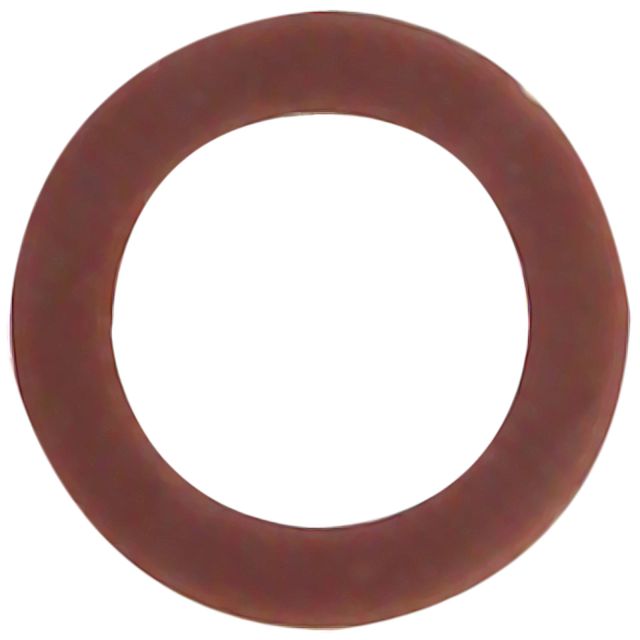
Leaky screw connections like that of the pressure regulator to the needle valve or the pressure gauge usually can be easily sealed with teflon tape.
Please note: To prevent leakages in fittings in particular, we ask our manufacturer Hiwi to additionally glue down technical components such as pressure regulators and gauges.